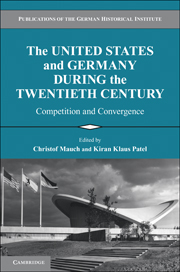Book contents
- Frontmatter
- Contents
- Contributors
- Acknowledgments
- 1 Modernities: Competition versus Convergence
- 2 Empires: Might and Myopia
- 3 Religion: Belief and Power
- 4 Law: Constitutionalism and Culture
- 5 Welfare: Entitlement and Exclusion
- 6 Immigration: Myth versus Struggles
- 7 Masses: Mobilization versus Manipulation
- 8 Market: Consumption and Commerce
- 9 Authority: Schools and Military
- 10 Gender: Equality and Differences
- 11 Environment: Conservation versus Exploitation
- 12 Film and Television
- 13 Education: Universities and Research
- 14 Media: Government versus Market
- Index
4 - Law: Constitutionalism and Culture
Published online by Cambridge University Press: 12 October 2018
- Frontmatter
- Contents
- Contributors
- Acknowledgments
- 1 Modernities: Competition versus Convergence
- 2 Empires: Might and Myopia
- 3 Religion: Belief and Power
- 4 Law: Constitutionalism and Culture
- 5 Welfare: Entitlement and Exclusion
- 6 Immigration: Myth versus Struggles
- 7 Masses: Mobilization versus Manipulation
- 8 Market: Consumption and Commerce
- 9 Authority: Schools and Military
- 10 Gender: Equality and Differences
- 11 Environment: Conservation versus Exploitation
- 12 Film and Television
- 13 Education: Universities and Research
- 14 Media: Government versus Market
- Index
Summary
Some years ago in a public debate, the U.S. Supreme Court justice Antonin Scalia rejected indignantly the notion that international and foreign law could be of significance for the U.S. Constitution: “We don't have the same moral and legal framework as the rest of the world, and never have. If you told the framers of the Constitution that what we're after is to do something that will be just like Europe, they would have been appalled.” In Scalia's words, we see mirrored the unvaryingly influential perception that America is not only different from the Old World but also morally superior to it. This notion of exceptionalism is particularly evident in the popular culture of constitutional law. The Federal Constitution of 1787 calls forth unparalleled civil and religious admiration, and the principle of original intent – the binding of the courts to the intentions of the Founding Fathers – is more widely accepted in the United States than anywhere else in the world.
Given the impressive continuity of American constitutional history – especially when compared to the German experience – this acceptance and admiration are quite understandable. For the past 220 years, the Constitution has provided the institutional framework for political life in America. During the same period, Germany experienced a series of governmental systems and revolutionary ruptures, including two dictatorships. In the United States, the primacy of constitutional law as the “supreme law of the land” (Article VI, Section 2) was a constant from the beginning, whereas in Germany the “supremacy of the constitution” did not really take hold until after the caesura of 1945, and then only in the Federal Republic of Germany. Until then, the state had been of central importance to public law in Germany – it was not by accident that it was termed Staatsrecht, state law – whereas American constitutionalism has its roots in the protection of individual freedom vis-`a-vis the power of the state.
Consequently, when we consider the effect of constitutional law on economic development in these two countries, we see that in Germany state intervention into the economy was never particularly controversial, whereas in the United States the authority of the federal government in economic matters has been highly contentious since the early nineteenth century.
- Type
- Chapter
- Information
- The United States and Germany during the Twentieth Centurycompetition and convergence, pp. 52 - 69Publisher: Cambridge University PressPrint publication year: 2010

